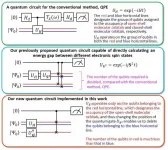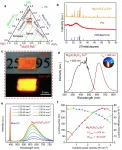(Press-News.org) PHILADEPHIA - Since the 1990s the rate of spinal fusion to treat lower back pain has been on the rise. A new prospective clinical study published in the journal Neurosurgery, the official journal of the Congress of Neurological Surgeons, found that lumbar fusions were three times more likely to be effective and obtain better patient outcomes, when guidelines for fusion were followed. The results suggest that when surgeons operate outside of what the evidence based literature suggests, patients may not have significant improvements in their quality of life and could have increased pain or other limitations.
"Unfortunately, we don't know how many lumbar fusion surgeries are not based on evidence-based best practice, or how these patients do clinically," says neurosurgeon James Harrop, MD, MSHQS professor and chief of the Spine and Peripheral Nerve Surgery division at the Vickie and Jack Farber Institute for Neuroscience - Jefferson Health. "The study goal was to explore what drove the best clinical outcomes for lumbar fusion, specifically the outcomes that patients valued as important to them. Our results indicate that alignment with clinical guidelines was the best predictor of positive outcomes over all other factors we evaluated."
The researchers assessed 325 lumbar fusion cases on whether they conformed to the North American Spine Societies (NASS) lumbar fusion guidelines. Assessments were done in a blinded fashion, and did not influence the decision of a patient's surgical team. The researchers then followed the patients out for 6 months after surgery and had them fill out a validated survey tool (the Oswestry Disability Index - ODI), which assessed patient-reported outcomes measures (PROM). Rather than examining surgical success, the ODI examines patient centric outcomes including: pain, walking, lifting, sleep, social live and sex life.
Dr. Harrop and his colleagues found that of all of the variables they examined - concordance with NASS guidelines, type of surgeon, whether it was the first back surgery or a revision - following guidelines was most strongly associated with positive patient ODI outcomes. And that the patients meeting their criteria for a successful surgery were three times higher in these cases, highlighting how effective lumbar fusions can be for the right patient. "This study shows that the majority of patients did well with a lumbar fusion," says Dr. Harrop, "But for the wrong patients, lumbar fusion can at best do nothing and at worst, create other problems."
The evidence-based guidelines, published by NASS, describe nine criteria including things like trauma, deformity of the spine, certain kinds of axial back pain, tumor, or infection. However, there is still some debate in the field as to when patients fit the criteria.
"For example, after a trauma with a "broken" back, where we know the spine is unstable - we also know a fusion can help," says Dr. Harrop. "That is a minority of the problems we see in practice. For our most common patient, one with degenerative diseases, spinal stability and instability has not been defined and understood as well as it should be. The NASS guidelines certainly help, but we need more research to understand what qualifies as normal range of movement, when is something pathologic and is immobilization through fusion the best option."
The research was initiated and funded by Jefferson as part of an effort to improve patient care and outcomes through rigorous study. "What we really need is support from insurance companies and other agencies to fund and promote research on best practices and evidence-based care. Without that, we cannot debate value," says Dr. Harrop.
INFORMATION:
Article reference: James Harrop, Alexandra Emes, Ameet Chitale, Chengyuan Wu, Fadi Al Saiegh, Geoffrey Stricsek, Glenn A. Gonzalez, Jack Jallo, Josh Heller, Kevin Hines, Lucas Philipp, Sara Thalheimer, Srinivas K. Prasad, Thiago S. Montenegro, Umma Fatema, Ashwini Sharan, "Are guidelines important? Results of a prospective quality improvement lumbar fusion project," Neurosurgery, DOI: 10.1093/neuros/nyab062, 2021.
Media Contact: Edyta Zielinska, 267-234-3553, edyta.zielinska@jefferson.edu.
Philadelphia, March 17, 2021 - Researchers from Children's Hospital of Philadelphia (CHOP) affiliated with the CHOP Epilepsy Neurogenetics Initiative (ENGIN) have compiled a complete genetic and clinical analysis of more than 400 individuals with SCN2A-related disorder, which has been linked to a variety of neurodevelopmental disorders, including epilepsy and autism. By linking clinical features to genetic abnormalities in a standardized format, the researchers hope their findings lead to improved identification and clinical intervention.
The study was published ...
A groundbreaking study has given new insights into how copper deposit-forming fluids are transported naturally from their source deep underground towards the Earth's surface.
A team of geologists, led by Lawrence Carter from the University of Exeter's Camborne School of Mines, has published a new theory for how porphyry copper deposits form.
Porphyry deposits provide around 75 per cent of the world's copper which is in increasing demand for electric vehicles, power infrastructure and green technologies such as wind turbines. They originally develop several kilometres below the Earth's surface above large magma chambers. Not only are porphyry deposits rare but most large near-surface examples have already been ...
A world-first 'flow model' devised by Australian researchers could drastically slash public transport commuter times during peak periods on some of the busiest roads in major cities, new research shows.
When this flow model was implemented to improve the worst traffic bottlenecks across Melbourne, commuters saved close to 2000 hours of travel time during a single morning peak period (7am-9am) and approximately 11,000 hours of passenger travel time during a normal weekday.
Ameliorating major traffic bottlenecks also contributed to a more than 23 per cent improvement in reliability of Melbourne's public transport network, ...
OSAKA, Japan. Quantum computers have seen a lot attention recently as they are expected to solve certain problems that are outside the capabilities of normal computers. Primary to these problems is determining the electronic states of atoms and molecules so they can be used more effectively in a variety of industries - from lithium-ion battery designs to in silico technologies in drug development. A common way scientists have approached this problem is by calculating the total energies of the individual states of a molecule or atom and then determine the difference in energy between these states. In nature, many molecules grow in size and complexity, and the cost to calculate this constant flux is beyond the capability of any traditional ...
High-power laser diode (LD) driven solid-state lighting can generate super-high luminance far exceeding the state-of-art light-emitting diodes (LEDs) source by factors of 2-10, enabling it particularly attractive for automotive headlamp, outdoor lighting, multimedia projectors, laser TVs and so on. Whereas, the thermal shock of laser is extreme, and under intense laser excitation, traditional LEDs phosphor would suffer from luminescence degradation or even failure due to the luminescence saturation. Aiming to overcome this deficiency, highly efficient and stable luminescence bulk phosphors including single crystal, polycrystalline ceramic phosphor and glass ceramic composite phosphor ...
Solar-induced chlorophyll fluorescence (SIF) is emitted during plant photosynthesis. SIF results from vegetation chlorophyll giving off red and infrared light wavelengths when excited by solar radiation. Measuring SIF is important because it is closely related to the terrestrial gross primary productivity (GPP), which calculates the total amount of carbon dioxide fixed through photosynthesis in a given area. According to many laboratory and field experiments, studies show that SIF can effectively improve estimations of GPP, which is necessary for global carbon sink research and carbon mitigation strategies.
China has committed to carbon neutrality by 2060. Technological upgrades and energy structure adjustments through the next four decades will be vital to reducing carbon ...
This is a landmark study in so far as being the first to raise the alarm that, despite early successes with Covid-19 vaccines, further research is warranted on a next generation of Covid-19 vaccines.
The results from this study, however, only indicate that the AstraZeneca vaccine does not have at least 60% efficacy against mild-moderate Covid-19 due to the B.1.351 (N501Y.V2) variant.
Based on a broader body of evidence, the World Health Organization recommends that this vaccine still be deployed in countries where the B.1.351 variant circulates, as it likely still protects against severe ...
Researchers from Skoltech and their colleagues from Hadassah Medical Center have developed hybrid nanostructured particles that can be magnetically guided to the tumor, tracked by their fluorescence and pushed to release the drug on demand by ultrasound. This technology can help make cancer chemotherapy more targeted. The paper was published in the journal Colloids and Surfaces B: Biointerfaces.Current treatments for cancer include chemotherapy, immunotherapy, radiation, and surgery, but these are often not selective enough to target just the tumor ...
The diesel engine is the backbone of transportation due to its irreplaceability as the primary power source for the freight, navigation and marine engine industries and non-road engineering machinery for the foreseeable future. However, the control of contaminants from fuel combustion has become an urgent global concern. Nitrogen oxides are the primary pollutants from transportation and can contribute to the formation of haze, photochemical smog and acid rain. Selective catalytic reduction of NOx with ammonia (NH3-SCR) technology has been successfully and commercially applied for controlling pollution from diesel vehicle exhaust. The development of ...
Electronic organic materials offer promise to support alternative and green energy sources to meet escalating global energy demands and strict environmental regulations. A KAUST-led team has now developed electron-transporting, so-called n-type, organic semiconductors that could help generate electricity from waste heat released by industrial processes and homes.
Thermoelectric generators that can convert temperature changes or gradients into electricity are highly suited for harnessing waste heat. These readily scalable devices are environmentally friendly and do not have any moving parts, which makes them ...




